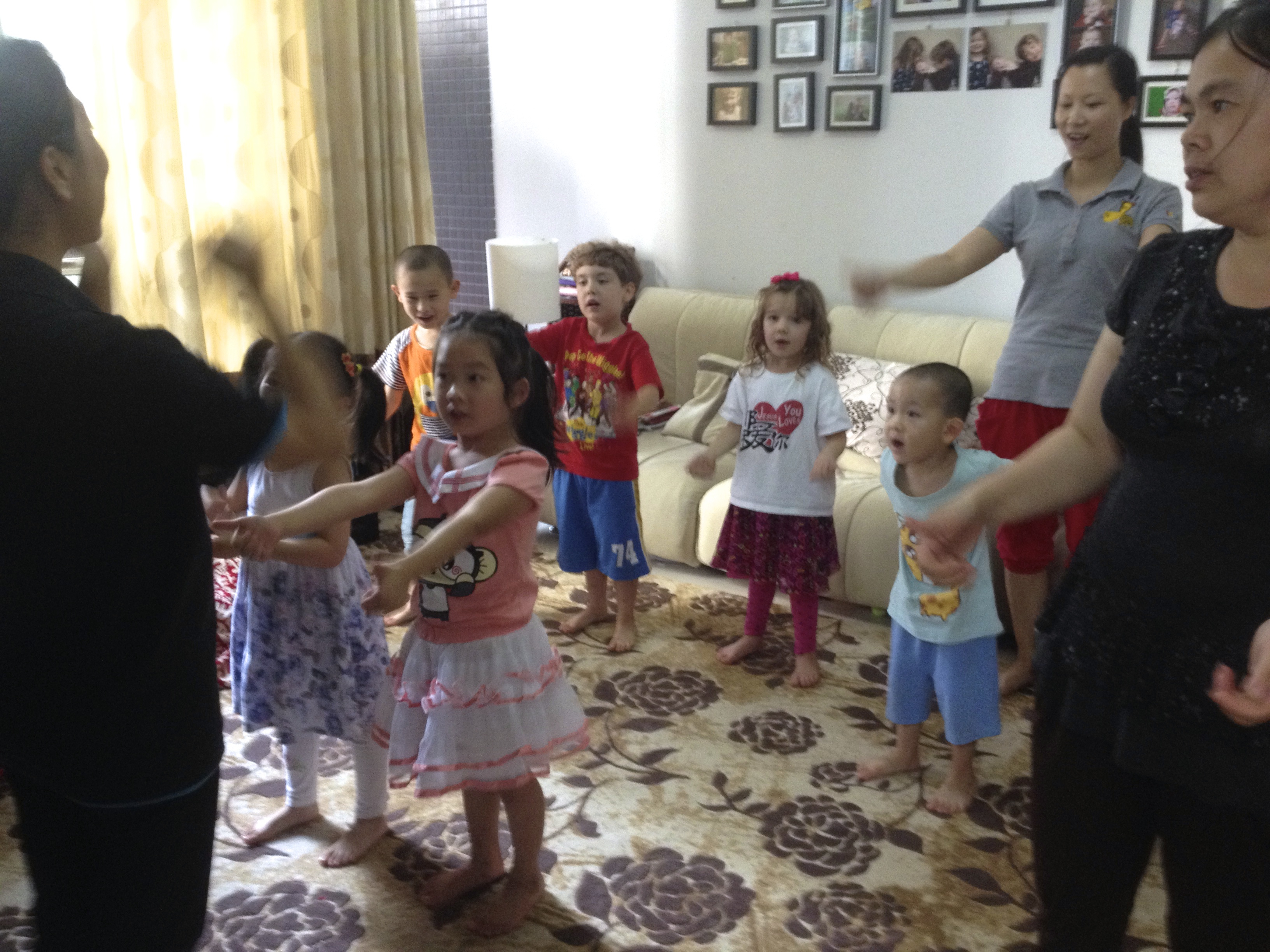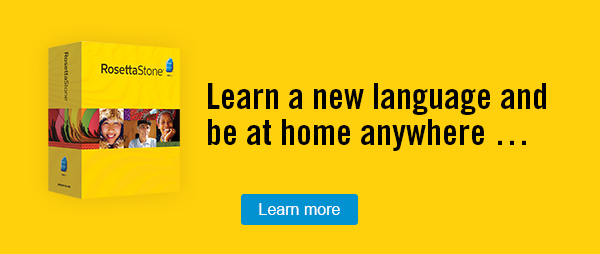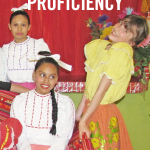
"Our yearly family mission trips in Mexico has been enriched by Sonlight in multiple ways. The friendships we have developed over the years are a great incentive to learn Spanish, and through Sonlight we purchased the Rosetta Stone Latin American version. We have been inspired by the mission-minded and culturally sensitive literature, beginning in the preschool curriculum through high school. The 1,800 mile round-trip in a church van always includes Sonlight books. The content of the program prepares us for seeing God's love even in the challenges and suffering from broken families that we encounter while serving the needy children of Mexico."
Amanda F. of North Newton, KS
Adding a foreign language to your homeschool day may be as simple as picking out a curriculum and penciling it into the schedule. Successfully achieving conversational confidence or long-lasting fluency in a foreign language, on the other hand, requires a completely different level of commitment.
We all know people who claim to have taken 2-4 years of high-school classes in French, German, or Spanish, but in adulthood, no longer remember how to say anything other than wastepaper basket and Where is the bank? in the language that they spent so many years studying.
How can we ensure that our homeschool students’ language studies will not meet the same sad fate? Proficiency in a second language can be a daunting task. The reason why so many former language students completely lose the languages they once studied can often be traced back to a lack of internal motivation and connection to the language, combined with a lack of opportunity to use what they have learned. Take these steps as you design a foreign language program for your homeschool, especially if your goal is for your child to truly master a second language.

"We live in China. Our local friends began bringing their children over a few times a week to learn how we homeschool, using Sonlight. We love all the interactive learning Sonlight has, like learning body parts in Science using the song Them Bones. Our friends participated in a Language Arts assignment to make an obstacle course. We practiced all the different verbs in both Chinese and English. The Chinese children have learned to read using Sonlight's K program and can read all the Fun Tales series. It has helped my Chinese friends learn more about how they themselves can teach their children and has helped give my children more confidence in speaking and using the Chinese language!" —Katie R. of Chattanooga, TN
1. Choose the Language with Care
Sure, a random natural interest in a language might be enough reason to choose that language. If your child has always dreamed of studying German, that may be reason enough to choose a German program.
However, language acquisition will be most successful when you choose a language that, because of your own family’s circumstances, strongly inspires internal motivation to learn and offers the most external opportunities to be used in everyday life.
When considering which language to study, consider your geographic location and family background:
- What minority languages are most commonly spoken in your community?
- What languages might your family be called upon to use in future careers or volunteer roles?
- Consider your family’s heritage: Where does your family originally come from? Do you have relatives who speak a language other than English?
What This Decision Was Like for My Family
We were in a slightly conflicted situation. My husband is a native Spanish speaker and for his extended family, Spanish is the primary language of conversation. However, we live in a country where Spanish is not spoken at all and where educational resources or entertainment in Spanish are non-existent. The wider language of communication where we live is English, but different local communities speak Asian languages—of which, I can speak Mandarin Chinese, but my husband does not. I have a reasonably strong grasp of Spanish, but don’t consider myself fluent in the language.

"After we read The Year of the Baby, we were telling our friends about the book. They came over and taught us some Chinese words and how to make bao zi. It was a fun cultural exchange. Because of Sonlight, we make cultural connections which bring the stories to life!"
—Sarah Z. of Clarkston, GA
In the end, for us, the familial connection trumped the linguistic circumstances of our location, and we opted to prioritize Spanish as our family language alongside English. I am remaining open to adding Mandarin Chinese into our classes when we are further into the formal school years. But for now, the right choice for our family is focusing on the languages of our son’s heritage: English and Spanish.
2. Don’t Limit Language Learning to School Hours
You may have seen some programs which tout that you can learn a language in 15 minutes a day. In my own experience of language learning, results are always correlated to the time invested. Choose a language curriculum that works for your family, but don’t stop your language learning once you’ve checked that box in each day’s schedule.
To maximize learning, you’ll need to be proactive in finding ways to increase exposure to and use of the language:
- You might opt to volunteer as a family in a community where the language is spoken.
- You can find audio and visual entertainment options that exist in your target language, whether they are movies, television shows, songs, audio books, or podcasts, and incorporate those into your family’s entertainment time.
Strive to use the target language together as a family outside of school hours.
What This Looks Like for My Family
We tend to naturally speak in Spanish at various times of day. We’ve chosen that most of our children’s picture book collection be composed of Spanish books, which helps me, the non-native speaker, because reading to my son in Spanish is very easy for me. My husband plays his favorite Spanish-speaking musical artists daily, and my son listens in on Spanish language conversations between his dad and his abuelos on a regular basis.

3. Expect to Invest Time and Money
Proficiency in a second language typically requires a significant investment of both time and money. I would not recommend trying to learn a language solely through free resources. While it may be possible if you are learning a popular language and are very dedicated to seeking out free resources—do not underestimate the value of high-quality, thorough curriculum and experienced teachers.
Free apps are fun and useful, but the reason that I am a confident speaker of Mandarin Chinese is because I took four years of college classes in the language and then spent five years living in Asia and speaking the language regularly. It’s not because of playing Duolingo for free and listening to free podcasts (though I’ve done both).
Is the investment worth it? I would say it is absolutely worthwhile.
There is almost no better way to show love and value and respect for another person than by learning to speak the language of their heart. There is also almost no better way to learn humility than to attempt to begin conversing with a native speaker in a second language.
What This Investment is Like for My Family
Because my family doesn’t have access to public libraries with books in Spanish, we have invested money in building our own collection. We invest time each day into actively speaking Spanish as a family. In the future, as our son reaches school age, we plan to invest in Spanish grammar curriculum to use alongside our English language arts curriculum so that he can learn the rules for both. Because we chose a language that both parents understand, we don’t foresee needing to hire a native language teacher, but such a cost will be a worthwhile investment for many families.
Deciding that you want your homeschooled student to become multilingual is not an easy step, and not one that’s likely to be accomplished either for free or without significant planning and life changes on the part of homeschool parents. But proficiency in a foreign language will benefit them throughout their lives. Moreover, it is one more way they can serve, love, and respect others the way Christ has called us to do. Sonlight offers Rosetta Stone language curriculum as an amazing first step into the deep and thrilling waters of language acquisition.
At Sonlight, we strongly recommend that students learn a foreign language beginning by sixth grade at least. Choose from Rosetta Stone in 24 different languages!








